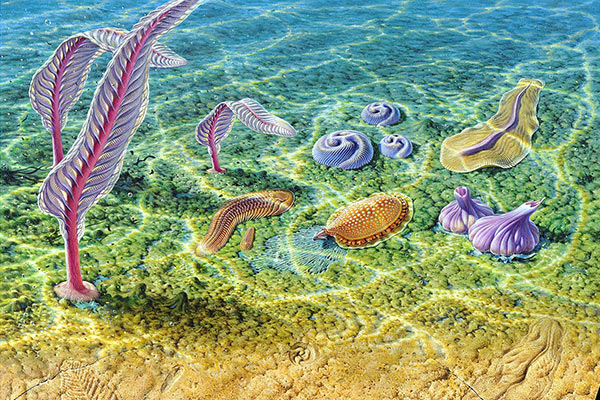For complex organisms, the average lifespan of a species is only about four million years—roughly about where we are now.
对于复杂动物来说,一个物种的平均寿命只有大约400万年——大致相当于我们人类迄今存在的时间。
Extinction is always bad news for the victims, of course, but it appears to be a good thing for a dynamic planet. "The alternative to extinction is stagnation," says Ian Tattersall of the American Museum of Natural History, "and stagnation is seldom a good thing in any realm." (I should perhaps note that we are speaking here of extinction as a natural, long-term process. Extinction brought about by human carelessness is another matter altogether.)
当然,灭绝对于受害者来说总是坏消息,但对于一颗有活力的行星来说似乎是一件好事情。“与灭绝相对的是停滞,”美国自然史博物馆的伊恩·塔特萨尔说,“停滞在任何领域都很少是一件好事情。”(我也许应当指出,我们在这里谈论灭绝,指的是一个漫长的自然过程。由于人类的粗心大意而造成的灭绝完全是另一回事。)

Crises in Earth's history are invariably associated with dramatic leaps afterward. The fall of the Ediacaran fauna was followed by the creative outburst of the Cambrian period. The Ordovician extinction of 440 million years ago cleared the oceans of a lot of immobile filter feeders and, somehow, created conditions that favored darting fish and giant aquatic reptiles. These in turn were in an ideal position to send colonists onto dry land when another blowout in the late Devonian period gave life another sound shaking. And so it has gone at scattered intervals through history. If most of these events hadn't happened just as they did, just when they did, we almost certainly wouldn't be here now.
地球史上的危机总是与随后的大跃进有关系。埃迪亚卡拉动物群的没落之后是寒武纪的创造性爆发。44000万年以前的奥陶纪灭绝为大海清除了大量一动不动而靠过滤来进食的动物,为快速游动的鱼类和大型水生爬行动物创造了有利条件。那些动物转而又处于理想地位;当泥盆纪末期又一次灾难给生命又一次沉重打击的时候,它们能把殖民者派上了陆地。在整个历史上,不时发生这样的事。要是这些事件不是恰好以它们发生的方式发生,不是恰好在它们发生的时间发生,现在我们几乎肯定不会在这里。
来源:可可英语 //m.moreplr.com/Article/201812/573233.shtml












